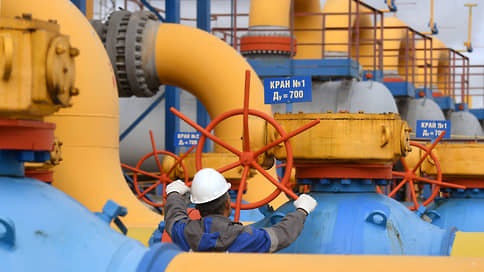Gas occupies the provided volume – Newspaper Kommersant No. 183 (7384) dated 10/04/2022
[ad_1]

In European countries that are members of the OECD, gas consumption from January to August has already decreased by 10% year-on-year, including in production by 15%, according to the quarterly report of the International Energy Agency (IEA) on the gas market. In China, demand during this time grew by no more than 1% (and the use of gas in power generation fell by 9%), stagnation was noted in Japan, a decline by 4% in India, and 3% in South Korea (growth was recorded in first of all in the USA – plus 4% and Canada – plus 8%). As a result, the total demand for gas this year may decrease by 0.8%, and next year it will grow by only 0.4%.
In the event of a complete cessation of gas supplies from the Russian Federation (while pipelines through Ukraine and Turkey remain), European countries will need an additional reduction in consumption this winter, the IEA believes. So far, the EU countries have agreed on a voluntary reduction of 15% from August 1 to March 31, 2023 (against a five-year average consumption level). To maintain the filling of storages at least 25% (87% at the end of September), demand will need to be reduced by 9% until the end of the heating season, while to ensure the filling level of 33% – by 13%.
Russian gas supplies to the EU (before the Nord Stream shutdown in early September) have decreased by 45% year-on-year (to 45 billion cubic meters) since the beginning of the year, in the third quarter the level of imports was less than 10 billion cubic meters (a decrease of 70% year on year), while Norway increased exports since the beginning of the year by 8% (6 billion cubic meters), Azerbaijan – by 50% (2.5 billion cubic meters), while the main source of replacement for falling supplies was LNG imports, which increased by 65%, up to 110 billion cubic meters. The increased demand for LNG in Europe, in turn, increases the competition of consumers, including those from Asia. Now Europe accounts for about a third of global consumption (another third – to Japan and China, the remaining supplies – to other Asian countries). Total LNG trade has grown by 6% since the beginning of the year, while demand in Asia has decreased by 7% during this time due to mild weather, covid restrictions in China and high prices. The movement of floating LNG storage facilities to Europe also leads to a reduction in supplies to Southeast Asia. At the same time, the “seller’s” market changed the terms of delivery – the share of contracts with an open destination decreased from 80% in 2018-2019 to 53% this year.
[ad_2]
Source link






